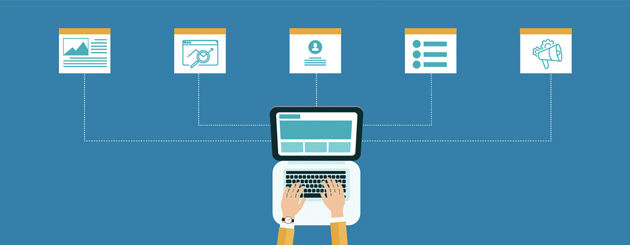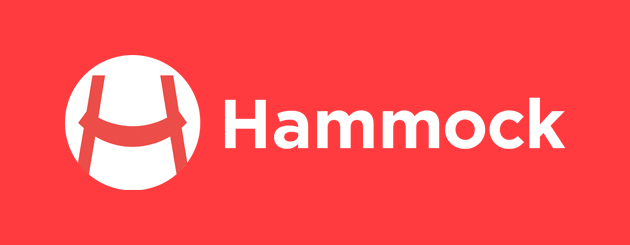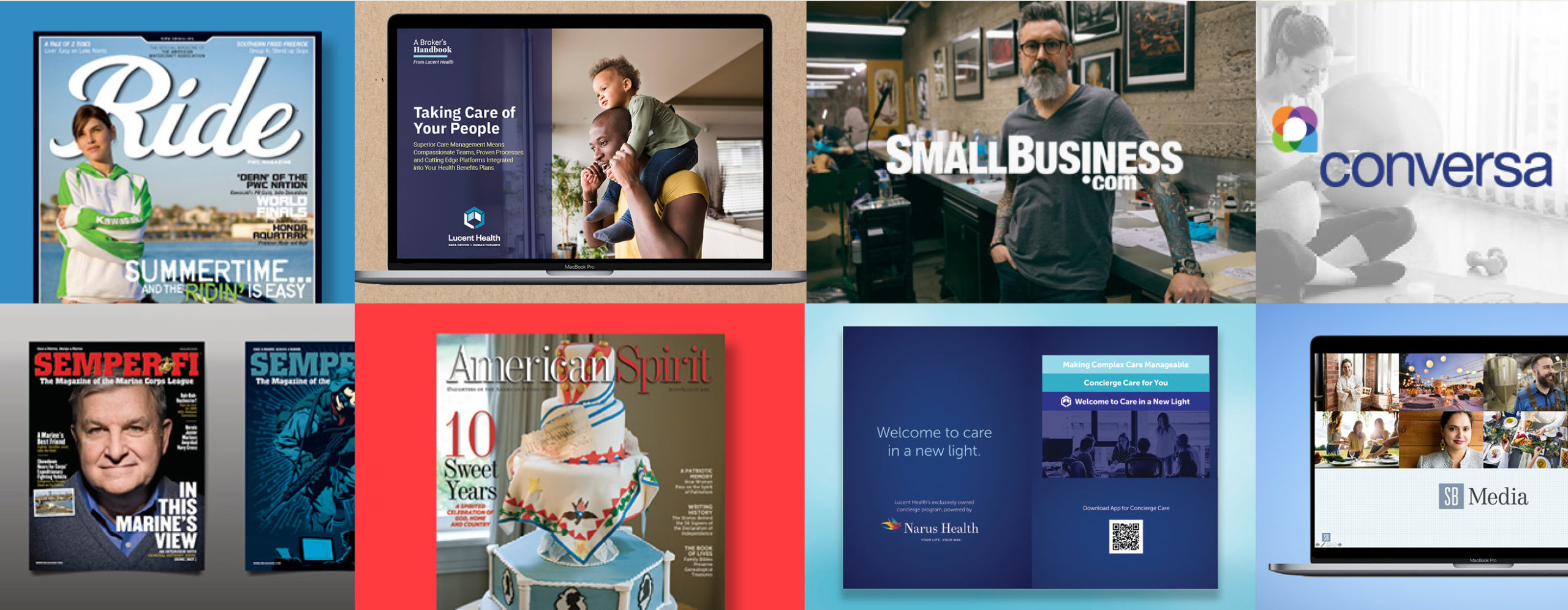



By Megan Hamby, Editorial Director
A wise woman once sang,
“If you fail to plan, you plan to fail
Strategy sets the scene for the tale”
OK, so maybe Taylor Swift borrowed that first line from Benjamin Franklin. And she definitely wasn’t singing about content strategy. But the sentiment is true: Failure to plan is planning to fail.
With only a handful of weeks left in the year, now is the time to start thinking about your content plans and goals for 2023. Consider these four questions.
Do you need help planning your content marketing strategy for 2023? Give us a call.
Image: Getty Images
About Hammock Healthcare Idea Email | This post is part of Hammock’s award-winning Idea Email series. Idea Emails are sent every other week and share one insightful marketing idea. Idea Email comes in two flavors: Original and Healthcare. To subscribe to the original Idea Email (general marketing ideas), click here. To subscribe to the Healthcare Idea Email (healthcare marketing ideas), click here

By Megan Hamby, Editorial Director
In 2017, Adidas sent an email to Boston Marathon finishers, with the subject line, “Congrats, you survived the Boston Marathon!”
I know what you’re probably thinking: “Oh no.” Just four years after the Boston Marathon bombing killed three people and injured 280, the sportswear giant sent this tone-deaf and insensitive email.
Even though the company issued a public apology on its social media accounts a few hours later, this blunder has become an object lesson to marketers, as one of the worst high-profile email mistakes we’ve ever seen.
As a marketer, you might be thinking, “Our company would never send something as egregious as that.” But without the right checks and balances in place, even the most seasoned marketers can press send on an email that could be read as insensitive or offensive.
So how can you avoid putting your foot in your mouth in your email marketing campaigns?
About Hammock Healthcare Idea Email | This post is part of Hammock’s award-winning Idea Email series. Idea Emails are sent every other week and share one insightful marketing idea. Idea Email comes in two flavors: Original and Healthcare. To subscribe to the original Idea Email (general marketing ideas), click here. To subscribe to the Healthcare Idea Email (healthcare marketing ideas), click here.
We are pleased to announce that two of Hammock’s clients won awards during the 2022 APEX Awards competition. The APEX Awards are based on excellence in graphic design, editorial content, and the ability to achieve overall communications excellence. APEX Grand Awards honor the outstanding works in each main category, while APEX Awards of Excellence recognize exceptional entries in each of the individual subcategories.
OptimizeRx, a digital health company that is focused on bringing life sciences support to patients and providers, received the Grand Award in Design & Illustration for an infographic about multiple sclerosis.
The infographic was part of a campaign that OptimizeRx created to communicate better solutions for pharmaceutical companies that want to generate awareness of, adherence to and initiation with specialized drugs and therapies for hard-to-reach multiple sclerosis patients. OptimizeRx shared its research on this topic in a series of four blog posts, along with an engaging infographic that worked on its own but combined into one larger infographic that told a complete story. The graphic designer was able to leverage the “X” in the company’s branding to execute a final compelling infographic that supported the brand story.
Hammock’s longtime client the Daughters of the American Revolution was also a winner and received two APEX Awards of Excellence. Hammock has partnered with the DAR for more than a decade to publish American Spirit magazine—and we’re excited to see them win once again.
The March/April 2021 issue of American Spirit magazine was recognized in the “Print Magazines, Journals & Tabloids” category. This issue of American Spirit served as the 11th annual Women’s History Month issue, and it featured articles on salons in Colonial America; Susanna Rowson, America’s first bestselling author; and how coverture laws affected early American women.
In the feature writing category, longtime Hammock writer Emily McMackin Dye was recognized with an Award of Excellence for her story “Deputy Husbands Kept the Home Fires Burning.” While their husbands were away at war or at sea, women kept the home fires burning, often raising and educating their children, managing finances, tending to the farms and livestock, and protecting their families from danger. Emily highlighted how the Revolutionary War created more opportunities for women such as Abigail Adams, Catherine Schuyler, Mary Bartlett and others to step outside traditional roles of the era and take charge of their households.

By Megan Hamby, Editorial Director
Recently, one of our healthcare clients reached out and asked for our help brainstorming some new ideas. She had a white paper that her team had developed, but she wanted to find a few creative ways to repurpose the information into different forms of content.
I got to work immediately, highlighting sections of the 15-page white paper that I thought could be broken down into shorter e-books, strategy guides, tip sheets, infographics and more. I quickly realized that the white paper was chock full of insightful and helpful information that could be broken down into easier-to-digest pieces of content.
If you have a white paper, blog post, infographic or other piece of content that needs a new lease on life, consider repurposing (or upcycling) it. Turn a series of blog posts into a guide; turn an infographic into a video; or use testimonials published on your site on your social media. The possibilities are endless. Repurposing your content has a number of benefits, including:
> Reaching a new audience. Everyone learns differently and consumes information differently. Repurposing your content in a new format—such as an infographic, a video or even a podcast—can reach an audience segment that otherwise might not have found it.
> Boosting traffic. The main goal of repurposing content is to drive more traffic to your site—and improve conversion rates. One study found that organic search still holds the majority share among traffic sources. This means that publishing your existing content in new formats can boost traffic and drive conversions.
> Building credibility and strengthening messaging. Google likes credible, authoritative websites. Repurposing your content in new formats can help build credibility with Google because you have more content about a specific topic on your site. Plus, it strengthens your messaging, positioning you or your organization as a thought leader.
Ready to upcycle your existing content in new, fresh ways? Let us help.
Image: Getty Images
About Hammock Healthcare Idea Email | This post is part of Hammock’s award-winning Idea Email series. Idea Emails are sent every other week and share one insightful marketing idea. Idea Email comes in two flavors: Original and Healthcare. To subscribe to the original Idea Email (general marketing ideas), click here. To subscribe to the Healthcare Idea Email (healthcare marketing ideas), click here.

By Megan Hamby, Editorial Director
At Hammock, we like to think of ourselves as a 31-year-old startup organization. Although we have a long history of serving clients and delivering powerful content marketing solutions, we strive to be “disruptors” in the industry—changing the ways organizations think about content.
This philosophy comes from Hammock’s founder, Rex Hammock, who announced his retirement from Hammock on April 6, 2022. More than 30 years ago, Rex saw an opportunity for brands to go direct to customers—initially with print magazines. When he started Hammock Inc. in 1991, it was a custom publishing agency, utilizing the then novel technology of desktop publishing to create creative media that was every bit as good as what was on the newsstands. Today, Hammock Inc. is a unique agency that creates content to be deployed across a diverse media landscape—and we owe that reputation to Rex’s strategic vision and leadership over the past 31 years.
Rex was a pioneer in the content marketing industry. Prior to founding Hammock, he was the founder/partner of a public relations subsidiary of one of the largest regional advertising agencies in the South, a congressional speechwriter and a press secretary. In 1999, he co-founded the national trade association that today is called the Custom Content Council. That same year, he started SmallBusiness.com, a site dedicated to helping small-business owners and managers get the right information for important decisions. Rex was a trailblazer in blogging—in 2004, he became the first person to blog a meeting with a president, when he met with President George W. Bush.
Most importantly, Rex created a positive company culture at Hammock—one that values teamwork, engagement, communication and collaboration. In an industry where people change jobs every few years, Hammock’s employees have stayed on board—with some celebrating 25th anniversaries. He has cheered his employees on in professional and personal achievements, celebrated marriages and growing families, and made us laugh more times than we can count.
On April 6, 2022, Rex and John Lavey, incoming CEO, announced the completion of a management buyout. The transaction is part of a long-term succession plan that Rex and John developed together over many years—and it allows Hammock Inc. to continue successfully executing their strategic vision, aligning it with the market’s need for effective and innovative content marketing solutions. Although Rex will no longer be driving Hammock, his legacy lives on in the way we approach content marketing and deliver the highest-quality service to our clients.
This post is part of Hammock’s award-winning Idea Email series. Idea Emails are sent every other week and share one insightful marketing idea. Idea Email comes in two flavors: Original and Healthcare. To subscribe to the original Idea Email (general marketing ideas), click here. To subscribe to the Healthcare Idea Email (healthcare marketing ideas), click here.

By Megan Hamby, Editorial Director
As marketers, we can often get bogged down in adhering to the “rules” or best practices of content marketing. How often should we post on social media? What’s the best time to send a weekly newsletter to customers? How frequently should we update our blog?
And the list goes on and on.
Do a quick Google search on “content marketing best practices” and you’ll find about 580 million results. And that advice is worthwhile—understanding your audience and buyer’s journey, using data and analytics, repurposing your content, and determining your brand messaging are all incredibly important when it comes to content marketing.
But I have another suggestion: Don’t be afraid to break the rules and do what works best for your company.
Recently, our team was speaking with the senior content specialist for one of our clients. He schedules a weekly newsletter to be delivered to customers and prospects every Friday at 5 p.m. EST.
That sounds crazy, right? Many studies suggest that the best time to send B2B emails is around 10 a.m. in the middle of the week. With that research in mind, sending an email at 5 o’clock on a Friday afternoon seems counterintuitive—but for this client, it works. He shared with us that his company has a 35% open rate (industry benchmarks are 17–28%) and receives 250–300 clicks on each email. When he shared this information with us, I was impressed—but also not surprised. That email newsletter is often the last email I receive before signing off on Friday afternoons, so I am guaranteed to open and read it. Our client wasn’t afraid to break the “rules” of email marketing—and his creative thinking yielded positive results.
What are some ways that your company can be creative with your marketing efforts? Contact us today if we can help.
Image: Getty Images
About Hammock Healthcare Idea Email | This post is part of Hammock’s award-winning Idea Email series. Idea Emails are sent every other week and share one insightful marketing idea. Idea Email comes in two flavors: Original and Healthcare. To subscribe to the original Idea Email (general marketing ideas), click here . To subscribe to the Healthcare Idea Email (healthcare marketing ideas), click here.

By Megan Hamby, Editorial Director
In 1988, four men from Jamaica made history when they entered the bobsleigh race during the Winter Olympics in Calgary, Alberta, Canada. Jamaica—a country whose tropical climate keeps it warm year-round—had never competed in the Winter Games before. But after seeing a local pushcart derby, two American businessmen living in Jamaica proposed forming a bobsleigh team—and earned the support of the country’s Olympic Association.
Now, a Jamaican bobsleigh team is sure to attract attention no matter what. But when the U.S. ice hockey team was eliminated, American media stations needed to fill airtime—and chose to focus instead on the Jamaican bobsleigh team’s four-man event, leading even more people to learn of this unlikely team.
Jamaica’s appearance at the 1988 Winter Olympics inspired the 1993 movie Cool Runnings, which was a box office success and grossed $154.9 million worldwide.
Now, 34 years later, people still know about the Jamaican bobsleigh team that made history—despite not even placing in the top 10. Why? It’s an amazing story.
When we watch the Olympics from our living rooms, it can be hard to connect with the athletes. After all, not many of us can do backflips on a snowboard or a triple axel on the ice rink. But we may be better relate to the snowboarder who battles depression, the women’s bobsleigh world champion who is raising a child with Down syndrome, or the teenage skier who was adopted—and after we read or hear their stories, we’ll remember their names and root for them from our living room couch.
Author and inspirational speaker Simon Sinek once said, “People don’t buy what you do, they buy why you do it.”
When we hear Olympians’ stories, they become real people who face challenges, setbacks, disappointments and triumphs. We hear their stories and we learn their “why.”
So what does any of this have to do with marketing?
As marketers, we’re all constantly seeking out ways to connect with our audience. Storytelling should be a priority for marketers because it forms a human connection and elicits a response. Storytelling is a powerful tool for transmitting knowledge and information, and, when done correctly, it differentiates you from your competitors and makes you memorable to your customers.
As you settle in to watch the 2022 Winter Olympics, take a second to think about how you can tell your organization’s story—and give us a call for help.
Image: Getty Images
About Hammock Healthcare Idea Email | This post is part of Hammock’s award-winning Idea Email series. Idea Emails are sent every other week and share one insightful marketing idea. Idea Email comes in two flavors: Original and Healthcare. To subscribe to the original Idea Email (general marketing ideas), click here . To subscribe to the Healthcare Idea Email (healthcare marketing ideas), click here.

By Megan Hamby, Editorial Director
One of the biggest challenges that marketers face when creating new content is promoting and distributing that content. You’ve created campaigns with engaging blog posts, thought-provoking e-books and compelling infographics—but if you are not able to ensure your target audience sees it, then what good does it really do?
Generating qualified leads requires more than just publishing compelling content. You also need a strategy for promoting that content—focusing on all the tactics at your disposal to ensure your message reaches its intended audience. With healthcare, this isn’t a one-size-fits-all approach. Instead, your content strategy should be highly customized and you must leverage trusted channels—industry conferences, trade media or even your own events. Another option to include in your content strategy is paid media—a way to promote content through sponsored social media posts, native advertising, paid search results, video advertisements, display ads and more. Utilizing paid media can be an effective and efficient way to reach your target audience and expand your reach.
However, when it comes to paid media, simply using Google Search ads or pay-per-click ads likely won’t help you reach your target audience or key decision-makers. Instead, turn to more specific forms of paid media, such as:
This week, take a look at your content that could use an extra push—and look for new ways to distribute it with paid media. Need help? Give us a call.
Image: Getty Images
About Hammock Healthcare Idea Email | This post is part of Hammock’s award-winning Idea Email series. Idea Emails are sent every other week and share one insightful marketing idea. Idea Email comes in two flavors: Original and Healthcare. To subscribe to the original Idea Email (general marketing ideas), click here. To subscribe to the Healthcare Idea Email (healthcare marketing ideas), click here.

By Megan Hamby, Editorial Director
What comes to mind when you think of “content marketing”? Chances are, you’re thinking about blog posts, whitepapers, case studies, how-to guides and e-books. While content marketing is all of those things, it would be foolish not to consider visual mediums as content marketing.
As an editor and a writer, I naturally love the art of the written word. But in today’s digital age, it should come as no surprise that a whopping 65% of people are visual learners, according to the Social Science Research Network. Visual elements, such as video, presentations and infographics, help marketers connect with their audiences even faster—in fact, research shows that visuals are processed 60,000 times faster than text in the brain.
I don’t know about you, but those numbers convince me of the importance of visual storytelling and have me brainstorming ways to incorporate more visuals into the content we deliver for our clients.
Take video, for example. YouTube has more than 2 billion logged-in monthly users and is the world’s second-most visited website (right after Google, its parent company). Plus, research shows that more than 50% of B2B decision makers use YouTube to research purchases, making it the most-used social platform for this purpose.
Video has been an important storytelling medium for clients we’ve worked with to present their messages compellingly and memorably. With one client, we interviewed CEOs and executives from various companies, allowing them to tell their own stories to be used at a conference. The videos were more engaging for the audience than, say, a brochure with the executives’ bios and work history.
Another example of visual content includes infographics, which are a helpful way to synthesize data and information in an easy-to-digest format. Peppering a slide deck with visual aids, such as infographics, can help your audience retain information. Research shows that people who are asked to recall information after a three-day period retain only 10% of what they heard during an oral presentation; 35% from a visual presentation; and 65% from an oral presentation with visuals. The data speaks for itself: Visuals are a win.
As you kick off a new year, what’s on your content calendar that could benefit from a dynamic visual? Is it a blog post, accompanied by an infographic? An interview conducted on video or a how-to instructional video posted on your website? Or is it a presentation with 3D effects, infographics, powerful imagery and visually appealing colors?
This year, we challenge you to think outside the box when it comes to delivering content. Contact us today to learn how we can help you use visuals to yield better results for your organization.
Image: Getty Images
About Hammock Healthcare Idea Email | This post is part of Hammock’s award-winning Idea Email series. Idea Emails are sent every other week and share one insightful marketing idea. Idea Email comes in two flavors: Original and Healthcare. To subscribe to the original Idea Email (general marketing ideas), click here . To subscribe to the Healthcare Idea Email (healthcare marketing ideas), click here.

By Megan Hamby, Editorial Director
Last week, I received a call from my son’s day care director: He had been directly exposed to COVID-19 and his class would be closed for two weeks. I was, of course, immediately worried about my son’s health. But, for a moment, I felt overwhelmed at the thought of working from home for two weeks with a 3-year-old.
But when a friend asked if I was taking any time off while my son was home, I explained that I had not even considered it—because I knew Hammock would be flexible with my schedule. There were no complaints from my coworkers when my new 3-year-old intern joined the weekly Zoom staff meeting, or uproar when I needed to step away for an hour or so to prepare lunch and get him ready for naptime. We did what we always do: We adapted to the situation at hand.
When COVID-19 forced us to switch to a work-at-home arrangement in March 2020, we adapted to Zoom meetings and Basecamp chat messages. When a client asked us to press pause on all previously planned content last year and focus instead on coronavirus-related content, we quickly switched gears and developed a new content plan. Over the past year and a half, we have helped our clients rethink in-person events and conferences; change their content strategies; and build relationships with their customers.
Flexibility has long been part of our work culture at Hammock—even before the pandemic. For example, I worked at home two days a week before it became mainstream. One of our project managers even works in another state! I believe this culture of flexibility and adaptability is part of what has made us efficient at responding to our clients’ changing needs. We don’t let challenges get in our way—we simply find a way to work around them.
But flexibility in itself―in scheduling, physical work location, technology use or anything else―is not enough if you don’t have the fundamental skills in place to do the job the right way in the first place. At Hammock, as we have weathered moves, personnel changes, shifting economic conditions and more, we have never abandoned our core principles and skills. Even before the pandemic, we had the processes and platforms in place to help our clients succeed and achieve their goals. We have always been storytellers at heart, and what we excel at is learning our clients’ “stories” (and bits of hard-earned wisdom) and helping communicate them to a target audience in the most relevant and useful way possible.
We’re not the only ones who have adapted, of course. We have learned from others, and we hope that others have learned from us. And while adapting while staying true to your purpose can be a bit of a balancing act, we believe that we have found the right balance. If we can help you adapt to these continually challenging times, please reach out to us.
Photo: Getty Images
About Hammock Healthcare Idea Email | This post is part of Hammock’s award-winning Idea Email series. Idea Emails are sent every other week and share one insightful marketing idea. Idea Email comes in two flavors: Original and Healthcare. To subscribe to the original Idea Email (general marketing ideas), click here . To subscribe to the Healthcare Idea Email (healthcare marketing ideas), click here.